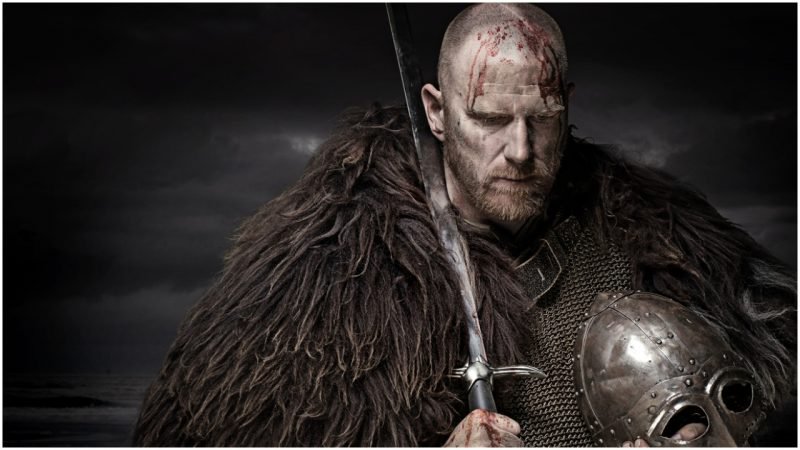The ‘berserkergang’ or possession
Before combat, the Berserkers entered together in a trance called berserksgangr or berserkergang. This trance was the process of possession, for which not everyone was prepared, because their energy could destroy the body of the profane. According to the Scandinavian tradition, such a state of ecstasy began with a sinister chill that ran through the body of the possessed and made his hair rise on end and produce Goosebumps.
This was followed by contraction of the muscles, a premonitory tremor, increased blood pressure and tension, and a series of nervous tics in the face and neck. Body temperature began to rise. The nasal fins dilated. The jaw tightened and the mouth contracted in a psychotic grimace revealing the teeth. Then came disturbing gnashing of teeth. The face inflated and changed colour, ending in a purple tone.
They began to foam through the mouth, to growl, to shake, to roar and scream like wild animals, to bite the edges of their shields, to beat their helmets and shields with their weapons and to tear their clothes, invaded by a fever that took possession of them and turned them into a beast, their blind instrument.
Witnessing such a transformation must have been something alarming and anguishing, reminiscent of the most urgent panic. It was a full-fledged initiation transformation, and some have seen in it the origin of the legends of werewolves.
After this process, the Berserkers received the Od or Odr (called Wut in Germania and Wod in England), the inspiration that Odin granted to some warriors, initiates and poets, touching them with the tip of his spear Gugnir (‘shuddering’). With it they became a furious whirlwind of blood and metal.
The physical strength of the ‘inspired’ by Od fever increased in a superhuman and inexplicable way, and also increased their resistance, aggressiveness and combative fanaticism. The pain, the fear or the fatigue disappeared, and what replaced them was an intoxicating sensation of will, unstoppable power and desire to destroy, devastate, kill, annihilate and overthrow…
If we imagine the appearance of those men laden with muscles, veins, nerves and tendons, with their face twitching under the skin of the beast, the fanatical clear eyes opened like plates and shining with that acies oculorum that Julius Caesar and Tacitus noticed among the German warriors; the teeth clenched with fury and foaming, splashed with enemy blood, we will instantly understand that those warriors had nothing to do with modern Western man.
These Berserkers were of the same blood as many modern Europeans, but they were men who lived for war, while the middle Westerner of today is a soft effeminate who lives for peace and, in his nearsightedness, persists in believing that he knows everything about the world and life.
The Wut, Wod, Od or berserkergang was a terribly intense and violent trance, in which one completely lost control and reason, and in which the beast freed itself of its iron chains to vent its claustrophobia and to ride in glorious and unbridled freedom through the dark and blurred forest, without responsibilities, without ties, without limits and without laws. It was not just about letting the inner beast emerge, but letting itself be possessed by the absolute, external divinity…
Some Berserkers, without receiving any injury, fell dead after the battle for their superhuman effort: their bodies were not prepared to be instruments of divine fury—at least for such a long time. Life expectancy was probably shortened for many years after each ‘session’ of berserkergang.
(Passages from one of Evropa Soberana’s essays in The Fair Race’s Darkest Hour.)

2 replies on “What happened to our werewolves?”
Could Berserkergang be coming back? Guillaume Faye, in Ethnic Apocalypse: The Coming European Civil War (1), finished as he was dying of cancer this year, wrote about his nation, France:
(1) According to Roger Devlin, the book’s original title was Racial Civil War but his editors at Arktos Media ‘prudently softened it, realizing it would only attract the attention of censors’.
[…] What happened to our werewolves? — The West’s Darkest Hour […]